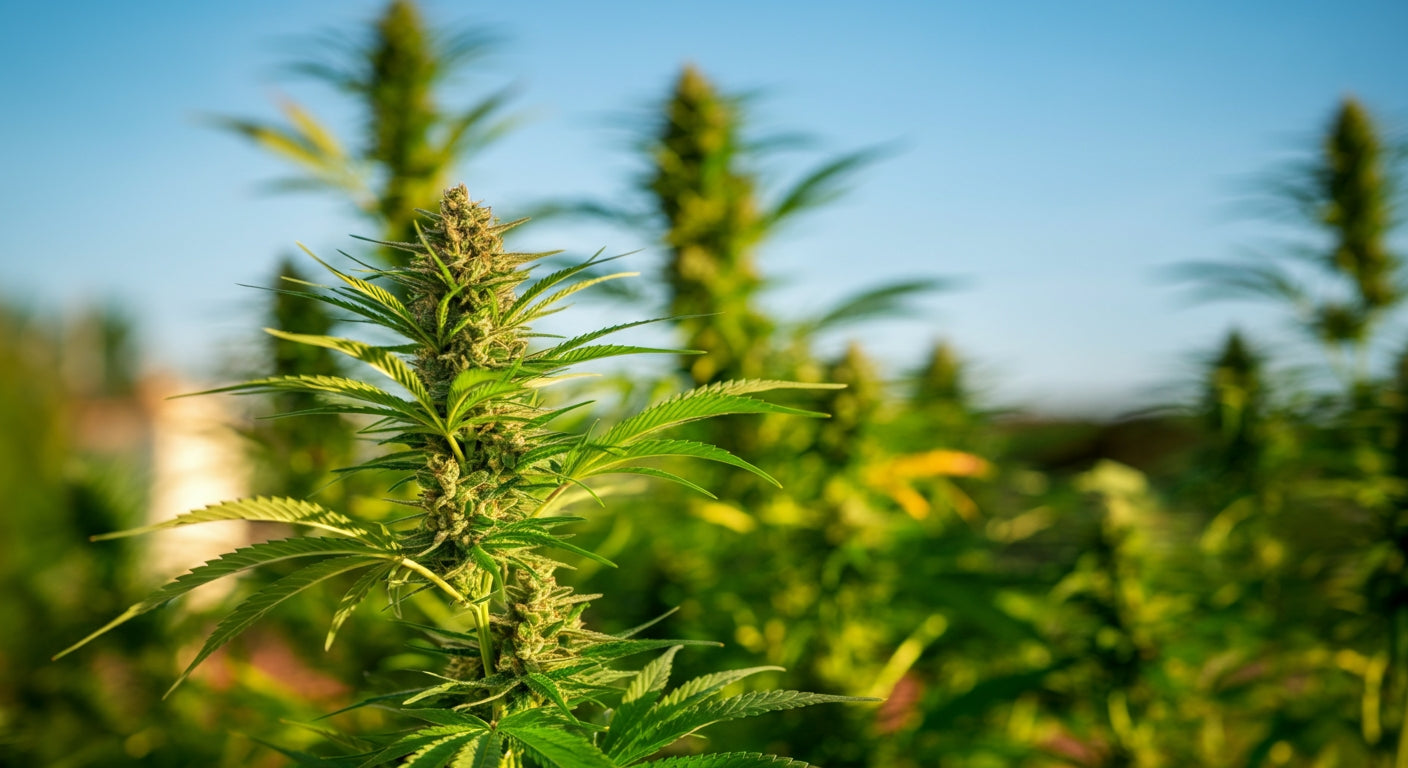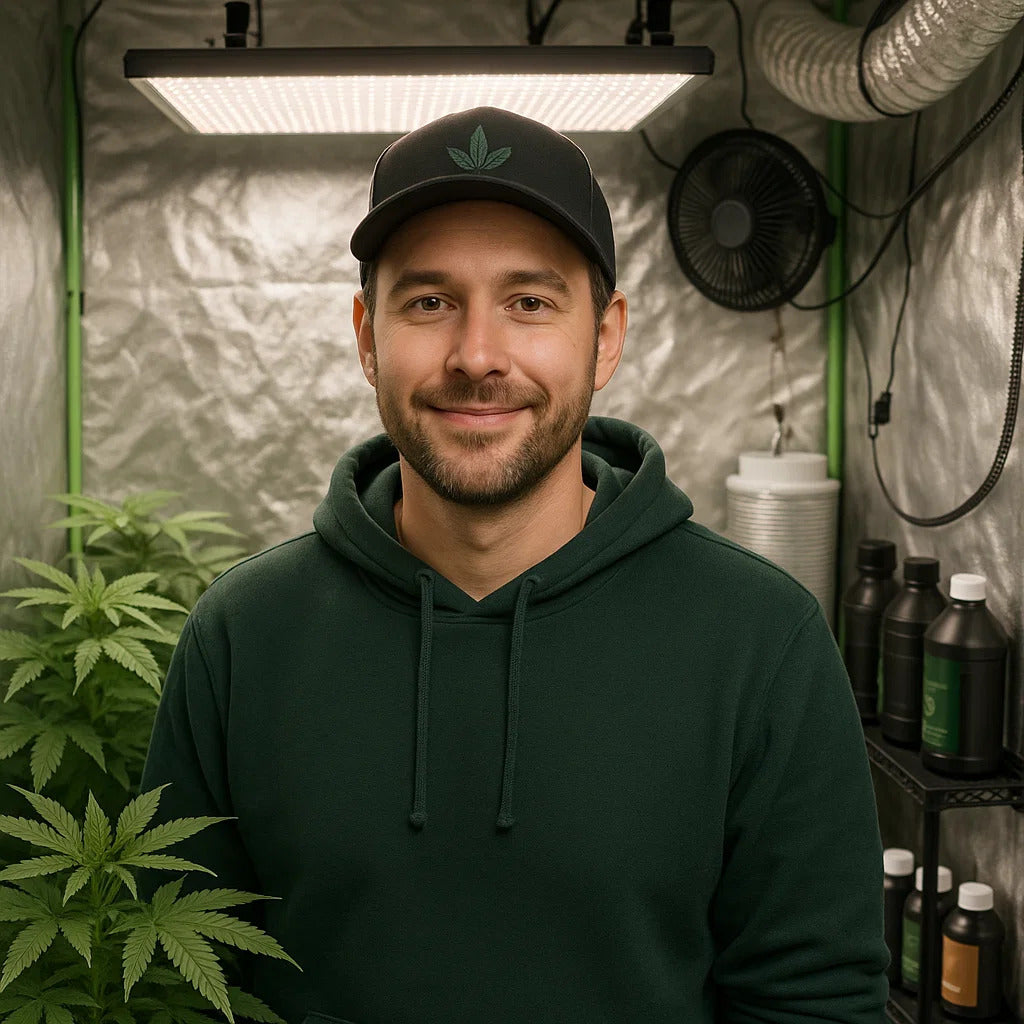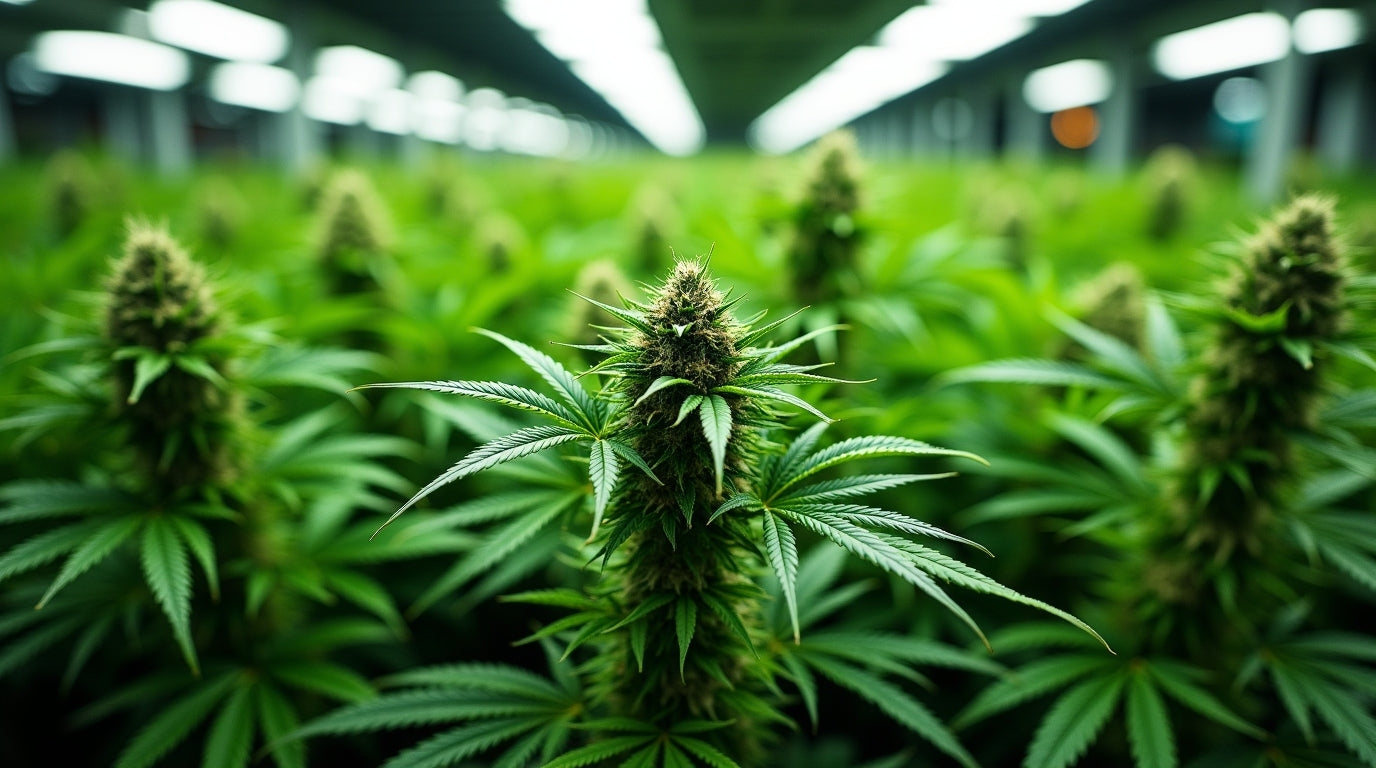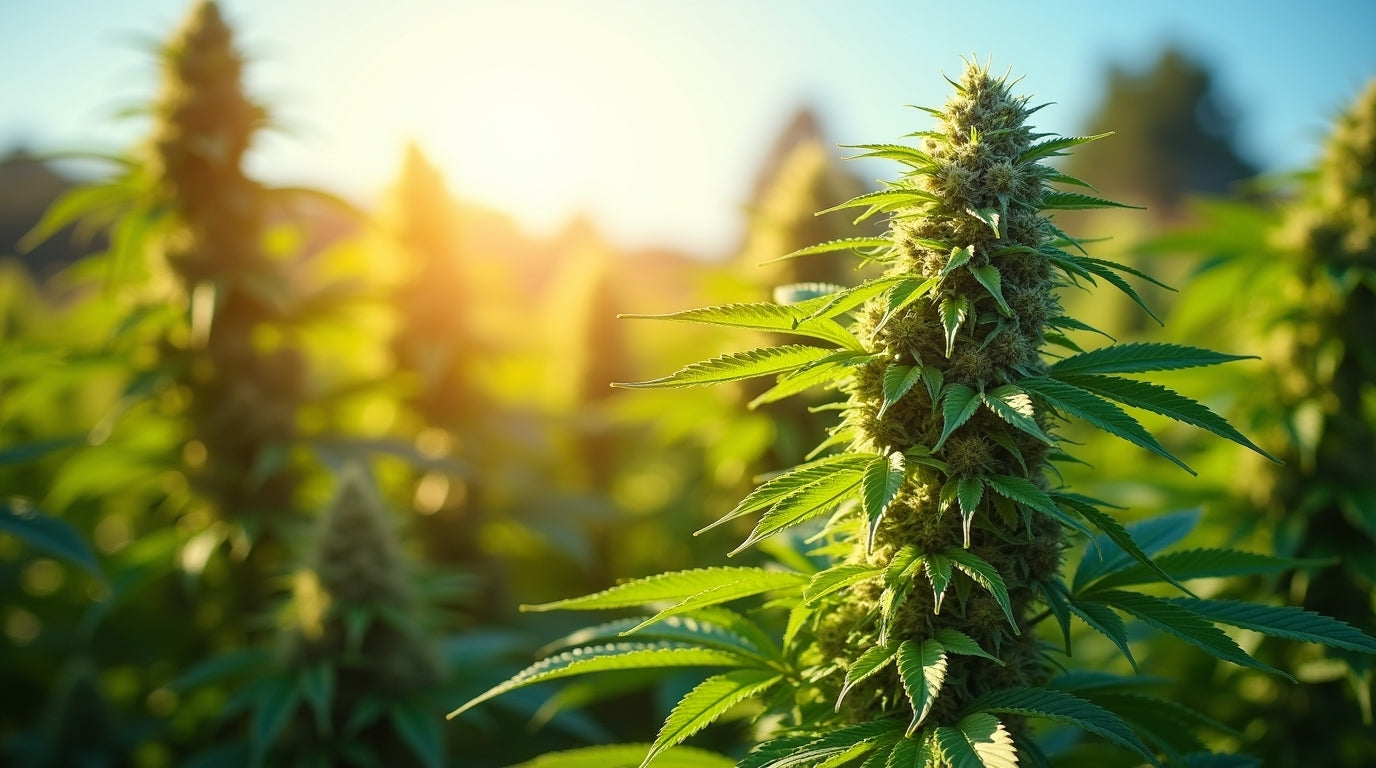
How Many Weed Plants Can You Grow? Your Complete Guide to Legal Limits and Space Requirements
The question "how many weed plants can you grow" has two critical answers: what's legally allowed and what's physically possible in your growing space. With cannabis legalization spreading across states, understanding both legal plant limits and practical growing considerations is essential for any home cultivator.
Whether you're planning your first grow or optimizing an existing setup, the right grow tent kit provides the foundation for maximizing your plant count within legal limits while ensuring healthy, productive harvests.
Legal Plant Limits: Know Your State's Laws
Before considering space requirements or growing methods, you must understand your state's legal cannabis cultivation limits. These laws vary dramatically and failure to comply can result in serious legal consequences.

States with Home Cultivation Rights
As of 2025, 25 markets (24 states plus Washington, D.C.) have approved home cannabis cultivation, representing 61% of all legal markets in the United States. Here are the current legal limits:
Most Permissive States:
- Michigan: Adults 21 and older can grow up to 12 plants in their home
- Massachusetts: Up to 6 plants per adult, with a maximum of 12 plants per residence if multiple adults live there
- Colorado: Up to 6 plants per Colorado resident over age 21, with as many as 3 plants flowering at one time
Moderate Limits:
- California: You can grow up to 6 cannabis plants at home if you're at least 21 years old
- New York: New Yorkers 21 years of age and older can grow up to 6 cannabis plants in their home for personal use (3 mature plants and 3 immature plants)
- Connecticut: Medical marijuana patients 18 years and older and adults 21 years of age and older are able to grow up to 3 mature and 3 immature plants in their home, with a cap of 12 total plants per household
Restrictive States:
- Virginia: A person 21 years of age or older may cultivate up to 4 marijuana plants for personal use at their place of residence; however, at no point shall a household contain more than 4 marijuana plants
- Maryland: Adults 21 and over can grow up to two plants in a single household. Medical patients may grow two more plants, not exceeding four plants in a single household
Important Legal Considerations
Local Restrictions: Counties and municipalities can pass stricter laws. For example, Denver limits a home grow to 12 plants, even if there are three or more adults over age 21 in the residence.
Security Requirements: Most states require that cannabis plants be grown in secure, enclosed areas not visible to the public.
Medical vs. Recreational: Medical cannabis patients often have higher plant limits than recreational users in the same state.
Space Requirements: How Many Plants Fit in Your Grow Area
Once you understand your legal limits, the next question becomes: how much space do you need? The answer depends on your growing method, plant training techniques, and tent size.

Basic Space Guidelines
Standard Spacing: Most growers follow the general rule of 1 plant per 2x2 square (4 sq ft), believing this is a great plant-to-space ratio.
Intensive Growing: Certain cultivators may install as many as four tiny plants in each square foot of space when using specific growing methods.
Grow Tent Size and Plant Count
2x2 Grow Tents (4 sq ft):
- Standard Growing: 1 plant
- Small Plant Method: 2-4 plants
- Best For: Beginners or limited legal plant counts
3x3 Grow Tents (9 sq ft):
- Standard Growing: 2-4 plants
- Intensive Growing: 6-9 plants
- Optimal Setup: These can fit two fruit and flowering plants
4x4 Grow Tents (16 sq ft):
- Standard Growing: 4 plants
- SOG Method: 16+ plants
- Versatile Option: A 4x4 tent is great for 4-8 plants, and often recommended for beginners as it offers better environmental stability
5x5 Grow Tents (25 sq ft):
- Standard Growing: 6-8 plants
- SOG Method: 25+ plants
- Large Scale: For 6 plants, you need a 5x5 grow tent
For optimal results in any size setup, invest in a quality large grow tent that provides adequate headroom and environmental control.
Growing Methods: Maximizing Plant Count and Yield
Different cultivation techniques dramatically affect how many plants you can grow in a given space and the yields you can expect from each plant.
Sea of Green (SOG) Method: Maximum Plant Count
The SOG method is perfect for maximizing plant numbers within legal limits and small spaces.
Plant Density: SOG achieves high yields quickly by cultivating a high volume of plants packed closely together—at least four plants per square foot.
Space Efficiency: We recommend growing one plant per square foot or two at most for optimal SOG results.
Advantages:
- Quick Harvests: You may be able to harvest every 45 days and have several harvests per year
- Space Maximization: Perfect for small grow tents
- High Yield per Square Foot: Multiple small plants can out-yield fewer large plants
Best For: Growers with higher legal plant limits who want maximum efficiency
Screen of Green (SCROG) Method: Fewer Plants, Higher Individual Yields
SCROG focuses on training fewer plants to fill more space through horizontal growth.
Plant Count: The SCROG method involves lower plant counts, typically 1 plant per 2'x2' area.
Training Required: The stem and branches are weaved through the net and forced to grow horizontally instead of vertically.
Advantages:
- Legal Compliance: Perfect for states with low plant limits
- Individual Plant Yields: Higher yield per plant than traditional growing
- Even Light Distribution: The flat canopy created by the SCROG technique ensures that all buds receive an equal amount of light
Low-Stress Training (LST): Flexible Approach
LST offers a middle ground between SOG and SCROG methods.
Space Requirements: Since the Low-Stress Training directs the stalk of the plant to move horizontally, the ideal grow space per plant is pegged at two (2) square feet.
Benefits: LST leads to efficient light distribution and improved bud quality. It's easy to implement and gentle on your plants.
Learn more about advanced growing techniques in our comprehensive guide on how to grow cannabis indoors.
Equipment Considerations: Matching Plants to Your Setup
The number of plants you can successfully grow depends heavily on your equipment setup and environmental control capabilities.
Lighting Requirements
Coverage Rule: The number of plants you have impacts lighting, but it's generally better to calculate lighting needs based on tent size rather than plant count.
Power Requirements: A 4x4 tent typically needs around 450-600W of LED lighting regardless of whether you're growing 4 large plants or 16 small ones.
Ventilation and Environmental Control
Air Circulation: Overcrowding your tent can lead to problems like "shade avoidance syndrome," where plants grow tall and lanky due to competition for light. This also increases the risk of pests and diseases because of poor airflow.
Humidity Management: More plants mean higher transpiration rates, requiring better environmental control systems.
For complete environmental control, consider a hydroponic grow system that provides precise control over all growing conditions.
Practical Plant Count Recommendations by Setup
Based on legal limits, space constraints, and growing methods, here are our practical recommendations:
Beginner Setups (1-4 Plants)
Recommended: 3x3 grow tent with 2-4 plants Method: Standard growing with basic LST Legal Compliance: Works in all states allowing home cultivation
Intermediate Setups (4-12 Plants)
Recommended: 4x4 or 5x5 grow tent with mixed methods Approach: Combine standard plants with SOG in available space Equipment: Enhanced ventilation and lighting systems
Advanced Setups (12+ Plants)
Recommended: Large tent with SOG method Requirements: States with high plant limits (Michigan, Massachusetts) Focus: Grow tent accessories for environmental control
Frequently Asked Questions About Cannabis Plant Counts
How many plants can I legally grow in my state?
Legal limits vary dramatically by state, ranging from 2 plants in Maryland to 12 plants per adult in Michigan. Most states limit adults to 2 or 3 mature plants but allow for more immature plants. Always check current local and state laws before starting your grow.
What's the difference between mature and immature plants legally?
Many states distinguish between mature (flowering) and immature (vegetative) plants. For example, New York allows 3 mature plants and 3 immature plants per person. This distinction lets you maintain a continuous growing cycle while staying legal.
How many plants can I fit in a 4x4 grow tent?
A 4x4 tent typically fits between 4 to 8 plants depending on plant type and training techniques. For autoflowers, you can fit about 4-6 comfortably. The exact number depends on your growing method and desired plant size.
Is it better to grow many small plants or fewer large plants?
This depends on your legal limits and goals. Although individual plants in a SOG arrangement might provide lower yields, the overall yield per square foot might be quite high due to the large number of plants. If you have low plant limits, focus on fewer large plants with training techniques.
Can I use autoflowering strains with these plant counts?
Yes, autoflowering strains can be utilized in a SOG setup. In many cases, these strains are great because of their smaller size and shorter flowering time. However, yields per plant may be lower compared to photoperiod strains.
What happens if I exceed my state's plant limit?
Exceeding legal plant limits can result in criminal charges, fines, and other legal consequences. For example, in Virginia, possession of more than four plants but no more than 10 plants results in a $250 civil penalty for a first offense, escalating to misdemeanor charges for subsequent offenses.
Maximizing Your Legal Plant Count
Understanding both legal requirements and practical growing limitations helps you make the most of your home cultivation rights.
Key Strategies:
Legal Compliance First: Always stay within your state's plant limits, including any local restrictions.
Space Optimization: Use appropriate growing methods for your tent size and plant limits.
Equipment Investment: Quality equipment like professional grow tents ensures you can maximize the potential of whatever plant count you're legally allowed.
Continuous Harvests: The SOG method may not be for everyone, but it can provide growers with a steady and sizeable supply of cannabis buds throughout the year.
Summary: Finding Your Optimal Plant Count
Quick Answer: The number of weed plants you can grow depends on your state's legal limits (ranging from 2-12+ plants) and your available growing space. A 4x4 tent can accommodate 4-16 plants depending on your growing method, while legal limits vary from 2 plants in restrictive states to 12+ plants in permissive states.
Key Takeaways: Always prioritize legal compliance first, then optimize your growing space and methods. SOG methods maximize plant count in small spaces, while SCROG methods maximize yield per plant for growers with low plant limits.
Start Your Legal Growing Journey
Ready to maximize your legal plant count? Success starts with understanding your local laws and investing in proper growing equipment that lets you make the most of your legal limits.
Browse our complete selection of grow tent kits designed for every plant count and legal situation. From single-plant small grow tents to large-scale operations, we have the equipment you need.
Interested in learning more about cultivation techniques? Check out our guides on how long to grow cannabis and growing weed plants to optimize your harvest regardless of your plant count.
Remember: successful growing isn't just about maximizing plant numbers—it's about creating the optimal environment for whatever plant count you're legally allowed to cultivate. With the right knowledge, equipment, and legal compliance, you can achieve impressive results whether you're growing 2 plants or 20.

Lena Myles
I'm a mushroom enthusiast and home cook based in Oregon. I'm passionate about foraging and creating fungi-focused recipes, especially delicious, plant-based dishes using gourmet mushrooms like trumpet, shiitake, and oyster. When I’m not in the kitchen, you’ll usually find me wandering the woods in search of new wild flavors.


